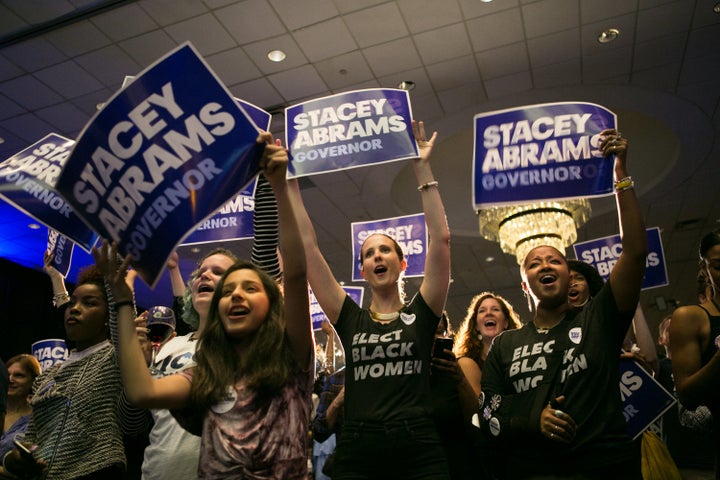
I have been doing politics full time for almost 40 years, and things have never been anywhere close to being this weird. The most repulsive man imaginable is our president, the Republicans who run our Congress are unrecognizably extreme, and yet there are still big questions whether Democrats can get their act together to start consistently winning elections again. In the midst of these troubling times, I am coming out with a book about how Democrats can start winning again. It’s called How to Democrat in the Age of Trump.
The book tells the story of how a decade ago, most Democrats ― myself included ― were pretty damn optimistic about our prospects for winning elections in the future and, more important, for moving America forward. I had just written a book on American political history in which I argue that the U.S. has had cycles of a long conservative period followed by what I call “big change moments,” when a progressive party would sweep into power and make massive structural changes that would improve our country for all time. Think the end of slavery in the 1860s, the progressive era at the turn of the 19th century, the New Deal and the 1960s.
There was good reason to be optimistic that at the end of 2008, we were on the verge of another big change moment. Democrats had just won two big wave elections in a row — the first time that had been done by either party since the 1930s. We had not only elected the first African-American president, but we had elected the son of an African immigrant, someone with an African Muslim name. We had won 60 votes in the Senate to go along with our biggest margins in the House since the post-Watergate ’70s. Demographic trends were moving steadily in our favor, and big majorities of voters agreed with our party’s positions on a wide range of issues.

Then the wheels came off, and we had a monumental crash. Not only in the 2010 cycle but for most of the past 10 years, Democrats have been losing far more than we have been winning. The good news is that we have a road out of the wilderness, if only we choose to take it. But we must have the courage to tackle the tough issues that cause us problems — the toughest being the issues of race. Despite the highest aspirations of the hope and change era, we are clearly not living in a postracial (or postpartisan) society.
I lead How to Democrat with the story of a powerful study done on discussing issues of race and class.
A statewide coalition called Our Minnesota Future recently partnered with the progressive think tank Demos Action and researchers such as the firm Brilliant Corners, Celinda Lake, Ian Haney López and Anat Shenker-Osorio in a groundbreaking study with results that Democrats need to understand and internalize.
In the research project, Our Minnesota Future did door-to-door canvassing of 800 homes. Half these conversations were with white folks, the other half with people of color. The researchers had flyers that used what they called “classic dog whistling”: traditional Republican rhetoric about the economy combined with attacks on immigrants and racial undertones. After seeing that rhetoric, 50 percent of the residents were shown flyers with a traditional progressive populist message on the economy, while the other 50 percent were shown a flyer with a progressive race-class narrative.
The combined race-class message said the following:
Whether white, black, or brown, 5th generation or newcomer, we all want to build a better future for our children. My opponent says some families have value, while others don’t count. He wants to pit us against each other in order to gain power for himself and kickbacks for his donors.
The majority of white survey participants initially agreed with the dog whistle flyer. When shown the class-only populist flyer, 44 percent of that subset shifted to the progressive candidate, and 55 percent did not. The results were approximately the inverse for whites who were shown the flyer that combined economic populism and a trying-to-divide-us-by-race analysis: 57 percent went to the progressive candidate, and 43 percent stuck with the conservative.
When the door knockers talked to people of color, a plurality initially agreed with the dog-whistle script, and 62 percent of those respondents switched to the progressive candidate after being shown the combined race-class messaging.
Researchers investigated one other thing among people of color: motivation to vote. When shown the class-only progressive populist flyer, the people of color surveyed were twice as likely to say they would sit out the election than when shown the race-class messaging.

In addition to the canvassing, Lake conducted polling to test what narratives worked the best compared with more traditional messaging approaches. Her advice coming out of that testing was in line with the Minnesota experiment: Discuss race upfront and overtly. Frame racism as a tool to divide and thus harm us all for the benefit of a few. Connect unity to both racial justice and economic prosperity.
This is just one experiment, but it reinforces what I have become convinced of after all my years in politics: It is a bad idea to avoid challenging topics with voters. The most challenging, central and foundational of all is racism, and Democrats can’t ignore it, stay silent on it or hope it will go away. Doing that is bad morally, and it’s also bad strategically. The people of color and progressive whites who support us will turn away from the party if we try to skirt this subject. The way to win is to directly tie racism and economic issues and to educate and organize in communities of color and the white working class.
The message of How to Democrat in the Age of Trump is this: If Democrats directly take on the tough issues of race, class and economics, they can craft an agenda and narrative that appeals to working-class voters of all races and ages. If Democrats do that, they will start winning elections again, all over the country. And when Democrats win and start governing again, if they deliver real, tangible benefits that improve voters’ lives, they will govern for a generation to come.
Mike Lux is the president and founder of the progressive nonprofit American Family Voices and his political consultancy, Mike Lux Media. His new book is How to Democrat in the Age of Trump.
